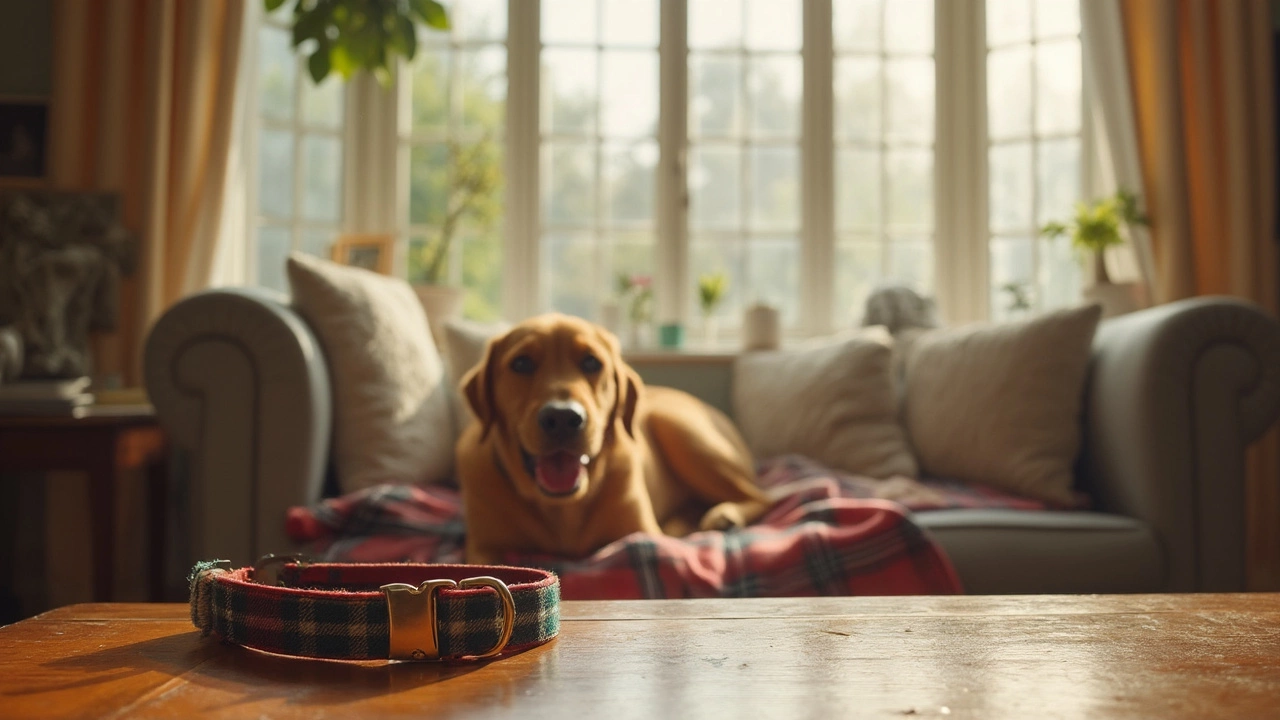Do Dogs Need Collars 24/7? Vet‑Backed Answers
If you’ve ever wondered whether to keep your dog’s collar on all the time, you’re not alone. Many owners think a collar is just a tag holder, but it also plays a role in safety and training. Below we break down when a collar is worth the extra wear, what problems can pop up, and how to pick a comfortable, secure option for daily use.
When a Collar Is a Must
First off, a collar is essential if your dog wears an ID tag. In case they slip out of the yard or get lost on a walk, the tag gives a quick way for anyone to reach you. A collar also holds a leash, so for most outdoor activities you’ll need one. If your pup has a medical condition that requires medication or a special tag, a collar is the easiest way to keep that info on them.
Some training programs use a gentle reminder collar – basically a light, snug band that lets you attach a tag or a reflective strip. In those cases, the collar stays on for weeks at a time, but it’s still lightweight enough for the dog to move freely.
Risks of Non‑Stop Collar Use
Even though a collar can be handy, leaving it on 24/7 isn’t always the best idea. A tight collar can rub the skin, cause irritation, or even lead to a sore spot behind the ears. Dogs that love to chew or dig might snag the collar on furniture, which can lead to a neck injury.
Another issue is the length of the collar. If it’s too long, the dog can slip it over their head and get stuck, which is a choking hazard. Regularly check the fit – you should be able to slip two fingers under the band. If you notice redness, hair loss, or a change in behavior, it’s time to give the neck a break.
For puppies, especially, the neck grows fast. A collar that fits today might be too tight in a few weeks. Switching to a soft, adjustable band or removing the collar when they’re home alone can keep them comfortable.
Choosing a Collar That Stays Safe
Look for a collar made from soft, breathable material like nylon or padded leather. Quick‑release buckles are a lifesaver – they let you snap the collar off in an emergency. Reflective stitching or a built‑in LED light adds visibility for night walks without needing a separate accessory.If your dog is a heavy chewer, try a chew‑proof silicone or a metal chain style, but remember these can be heavier. Balance durability with comfort; a heavy collar can strain the neck over time.
Finally, keep an eye on the tags. Heavy metal tags can pull on the collar and cause strain. Lightweight plastic tags do the job just as well and are gentler on the neck.
Practical Tips for Everyday Use
1. Check the fit daily – two fingers should fit under the band. 2. Rotate collars: have a spare on hand so you can give the worn one a break. 3. Clean the collar weekly to prevent odor and skin irritation. 4. Replace worn straps, buckles, or tags as soon as they look frayed. 5. Store the collar in a dry spot when not in use to avoid mold.
By following these simple steps, you can keep your dog safe and comfortable whether you choose to leave the collar on all day or only during walks. Remember, the goal is a happy, healthy pup – not just a tidy tag.
Posted By Bryndle Redding On 3 Jun 2025 Comments (0)
Dog Collars Indoors: Why Your Pup is Better Off Without
Many people leave collars on their dogs 24/7, but wearing a collar indoors can lead to unexpected problems. This article uncovers hidden risks, like injuries and stress, and offers safer solutions for dogs at home. You’ll get down-to-earth advice for keeping your pup safe and comfy inside. We’ll also look at easy ways to ID your dog without the collar drama. Skip the hassle and learn how to make your home safer with just a few smart changes.
READ MORE